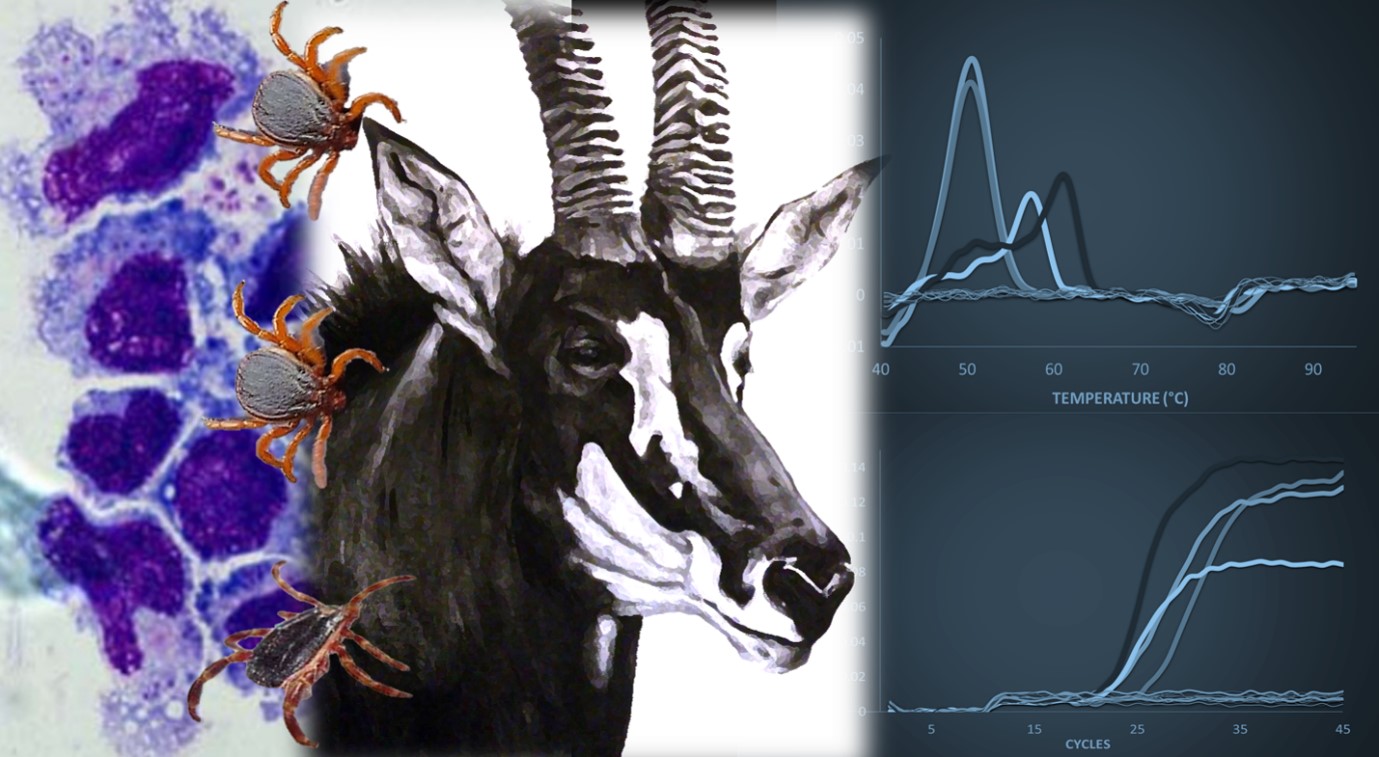It’s in the blood
The latest Paper of the Month for Parasitology is The host-specificity of Theileria sp. (sable) and Theileria sp. (sable-like) in African Bovidae and detection of novel Theileria in antelope and giraffe
Have you ever wondered whether the meat you eat contains parasites? If it came from a ruminant, chances are that it may contain several species of parasites named Theileria. Don’t worry, these parasites are relatively host-specific and although they may occur at millions of parasites per ml of blood, they are harmless to humans. They infect the red blood cells of their hosts, where they remain lifelong in what is known as the carrier state. They only infect new animals after a tick ingests an infected blood meal, molts and the parasites develop to a new stage before transmitted back into a new host.
The Theileria genus derives from Sir Arnold Theiler, who first identified the causative agent of East Coast fever, a disease that devastated the South African national cattle herd in the early 1900s. Since then a number of important Theileria species have been described that cause mortality of their hosts. Other Theileria species has adapted very well to their hosts and can occur at high levels in the blood without affecting the host.
The Theileria species relevant to the current study causes theileriosis in sable antelope and is called T. sp. (sable). This parasite has also been reported in cattle, Cape buffalo, dogs and other antelope suggesting that it is not host-specific. Since the disease caused by this species occurs in South Africa, we developed a specific and sensitive molecular test capable of detecting this parasite. We went to great lengths to validate the specificity of the test and to do this we developed another test based on next generation sequencing. This enabled us to sequence the 18S rRNA gene from many samples we tested and determine the presence of known or unique Theileria species. We used these tests to screen many cattle, Cape buffalo, sheep and antelope (black wildebeest, blesbuck, bluewildebeest, bushbuck, eland, gemsbuck, impala, kudu, sable antelope, springbuck, waterbuck) to see whether they are positive for this parasite. The results were quite interesting.
Firstly, we could not detect T. sp. (sable) in cattle or Cape buffalo, although these animals harbor many Theileria species. We did detect the parasite in various closely related antelope species. Unique parasite species were found in almost every antelope species that we surveyed. We concluded that T. sp. (sable) is not a universal parasite, but infects a limited number of host species. It highlighted the importance of using specific and sensitive assays when screening for parasites. The numerous unique Theileria species identified suggested that our understanding of Theileria biodiversity remains rudimentary, since we have not yet exhaustively sampled all ruminant species, and indicate that many new Theileria species remain to be discovered. This is important from a diagnostic perspective since we do not know whether our tests are specific when we screen new hosts with new parasites. As such, continuous assessment of biodiversity is important to verify diagnostic test specificity, but also to understand the host specificity of parasites.

The article The host-specificity of Theileria sp. (sable) and Theileria sp. (sable-like) in African Bovidae and detection of novel Theileria in antelope and giraffe by Ronel Pienaar, Antoinette Josemans, Abdalla A. Latif and Ben J. Mans is available free for a month.






